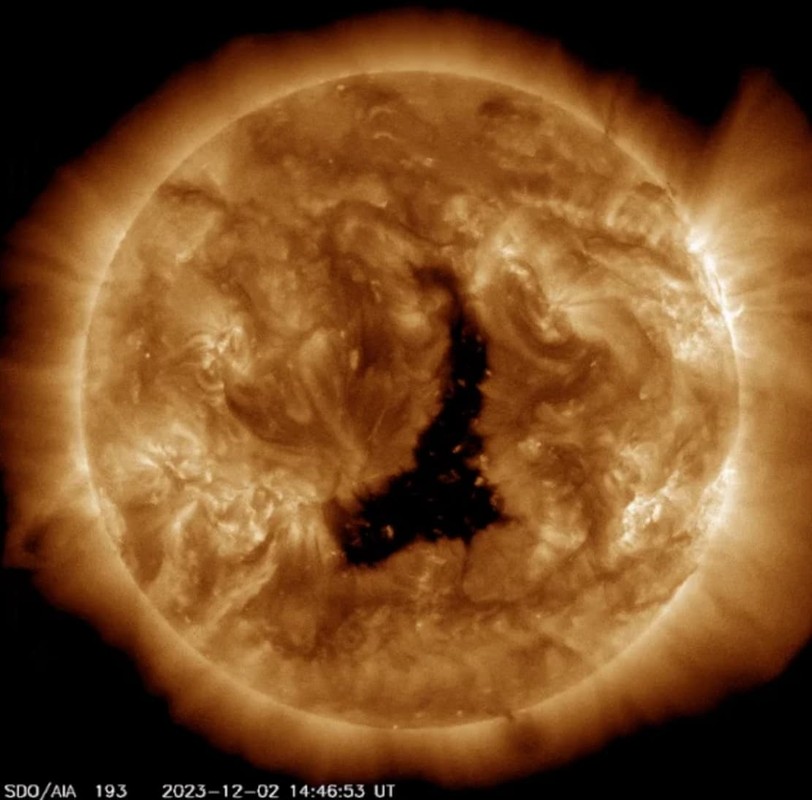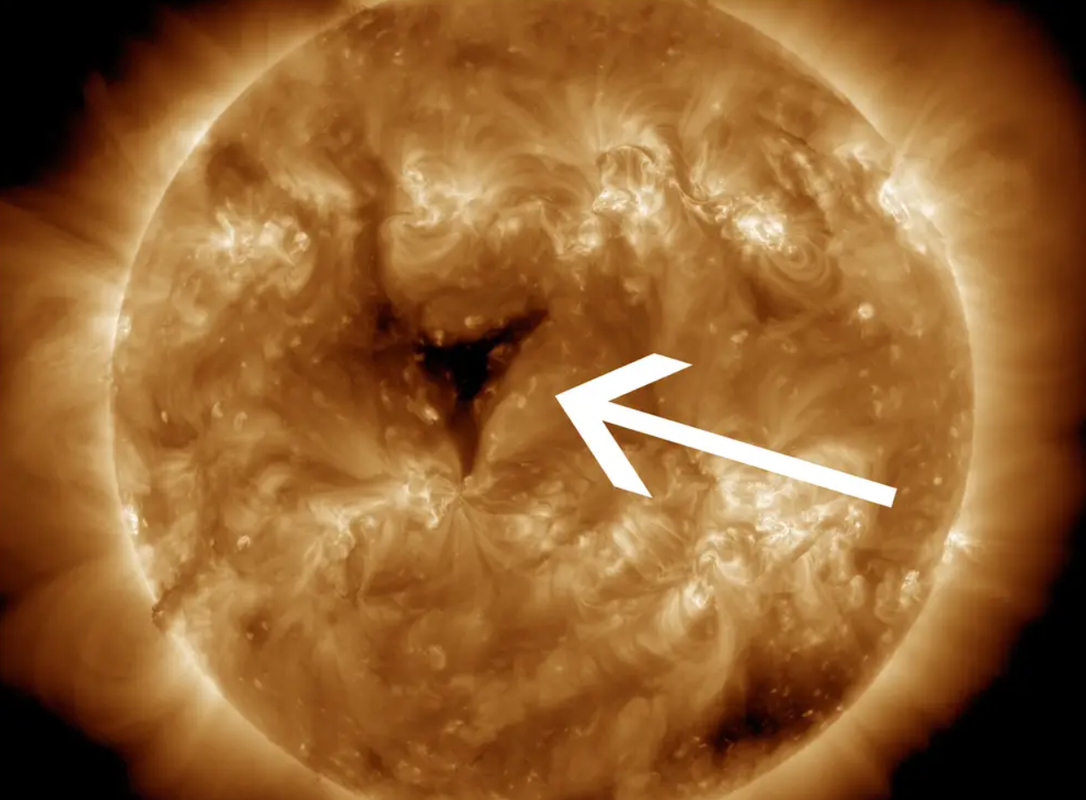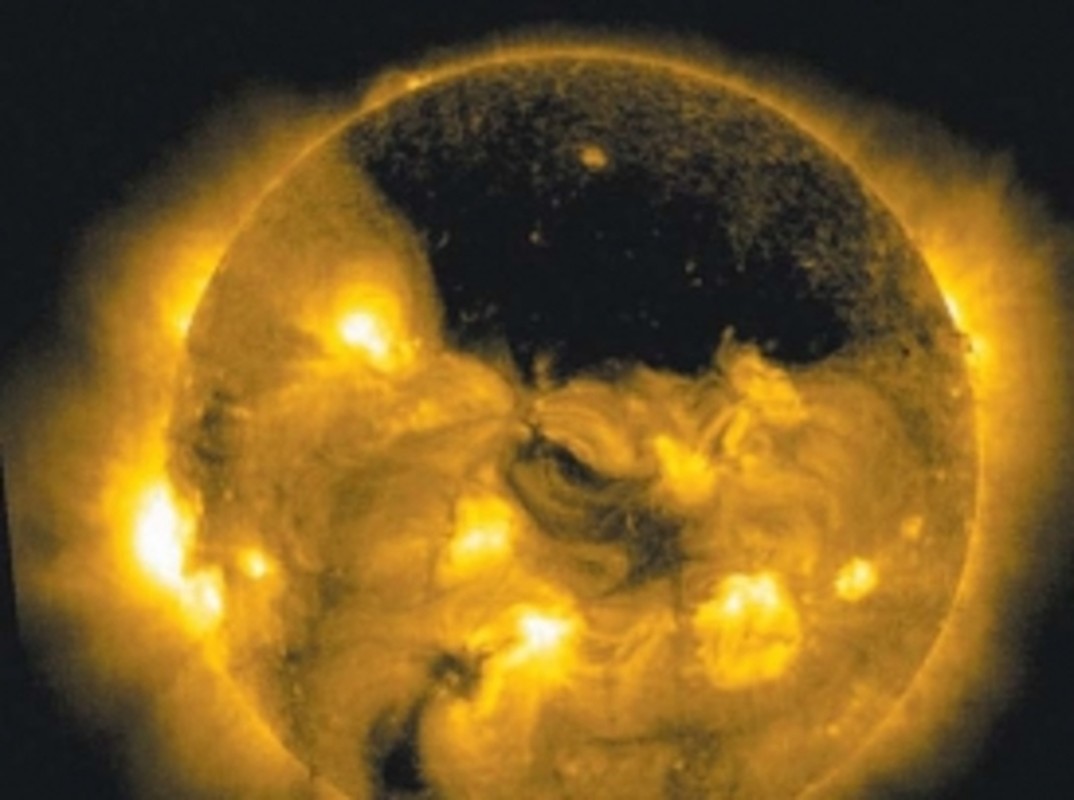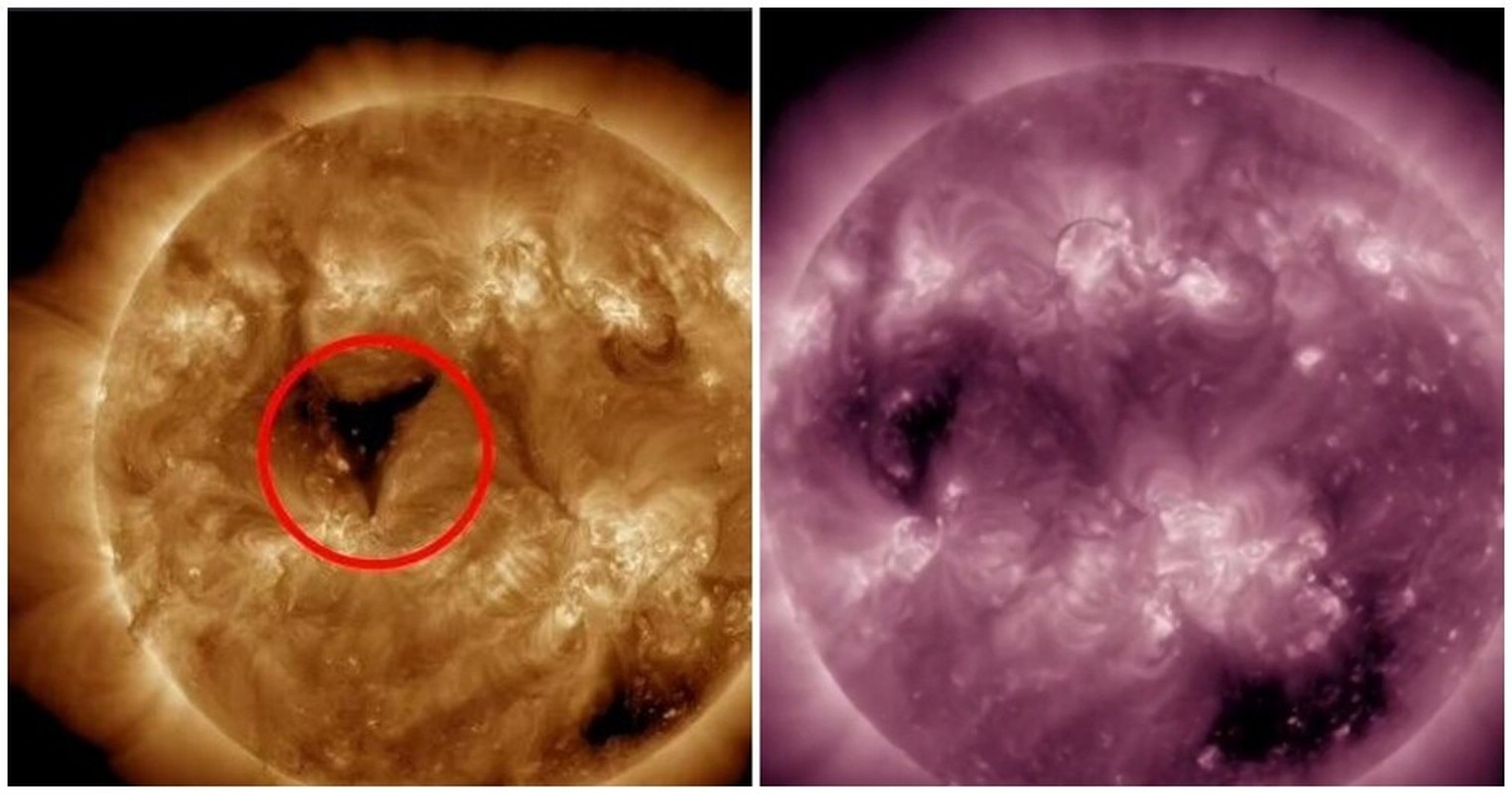A dark patch resembles black hole appeared on the surface of the Sun and sprayed solar wind – fast and strong streams of radiation – straight towards the blue planet. This “black hole” is called a coronal hole by the scientific community, about 800,000 km wide (60 times larger than Earth).Scientists say they have never seen a coronal hole of this size and orientation at this stage of the solar cycle. It formed near the Sun’s equator on December 2 and reached a maximum width of about 800,000 km within 24 hours. From December 4, “black hole” in a straight direction towards Earth.Initially, the experts predict “black hole” above can create a medium geomagnetic storm, or G2 level, with the ability to cause loss of radio waves and create strong auroras in the following days.However, in the end, the solar wind was not as strong as experts predicted. The G1 geomagnetic storm is weaker, but auroras can still appear at high latitudes.Currently, researchers do not know how long the coronal hole will last. The US National Oceanic and Atmospheric Administration (NOAA) said coronal holes have previously existed longer than one rotation of the Sun (ie 27 Earth days). However, the new coronal hole will soon no longer point directly toward Earth.Scientists explain that coronal holes appear when the Sun’s magnetic field suddenly opens, causing substances on the Sun’s surface to fly away in the form of solar wind. The coronal hole cannot be seen without looking under ultraviolet light.Radiation streams from the coronal hole are much faster than the normal solar wind and have many times caused disturbances in the Earth’s magnetic field (also known as geomagnetic storms).According to NOAA, coronal holes can appear at any time throughout the solar cycle but are more common during solar minimum. When they appear during the period of solar maximum, they are usually located near the poles, not near the equator.Therefore, the fact that such a large “black hole” opens near the equator when approaching the solar maximum gives scientists a “headache” in finding a solution.Invite readers to watch the video: Nobel Physics 2020 honors the discovery of black holes, the most mysterious object in the universe. Source: VTV24.
A dark patch resembles black hole appeared on the surface of the Sun and sprayed solar wind – fast and strong streams of radiation – straight towards the blue planet. This “black hole” is called a coronal hole by the scientific community, about 800,000 km wide (60 times larger than Earth).

Scientists say they have never seen a coronal hole of this size and orientation at this stage of the solar cycle. It formed near the Sun’s equator on December 2 and reached a maximum width of about 800,000 km within 24 hours. From December 4, “black hole” in a straight direction towards Earth.

Initially, the experts predict “black hole” above can create a medium geomagnetic storm, or G2 level, with the ability to cause loss of radio waves and create strong auroras in the following days.

However, in the end, the solar wind was not as strong as experts predicted. The G1 geomagnetic storm is weaker, but auroras can still appear at high latitudes.

Currently, researchers do not know how long the coronal hole will last. The US National Oceanic and Atmospheric Administration (NOAA) said coronal holes have previously existed longer than one rotation of the Sun (ie 27 Earth days). However, the new coronal hole will soon no longer point directly toward Earth.

Scientists explain that coronal holes appear when the Sun’s magnetic field suddenly opens, causing substances on the Sun’s surface to fly away in the form of solar wind. The coronal hole cannot be seen without looking under ultraviolet light.

Radiation streams from the coronal hole are much faster than the normal solar wind and have many times caused disturbances in the Earth’s magnetic field (also known as geomagnetic storms).

According to NOAA, coronal holes can appear at any time throughout the solar cycle but are more common during solar minimum. When they appear during the period when the Sun is at its maximum, they are often located near the poles, not near the equator.

Therefore, the fact that such a large “black hole” opens near the equator when approaching the solar maximum gives scientists a “headache” in finding a solution.
Invite readers to watch the video: Nobel Physics 2020 honors the discovery of black holes, the most mysterious object in the universe. Source: VTV24.

